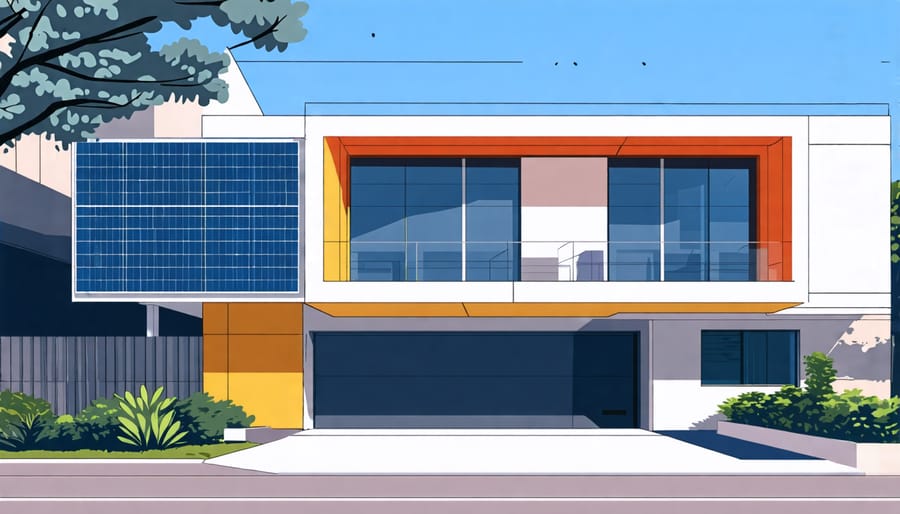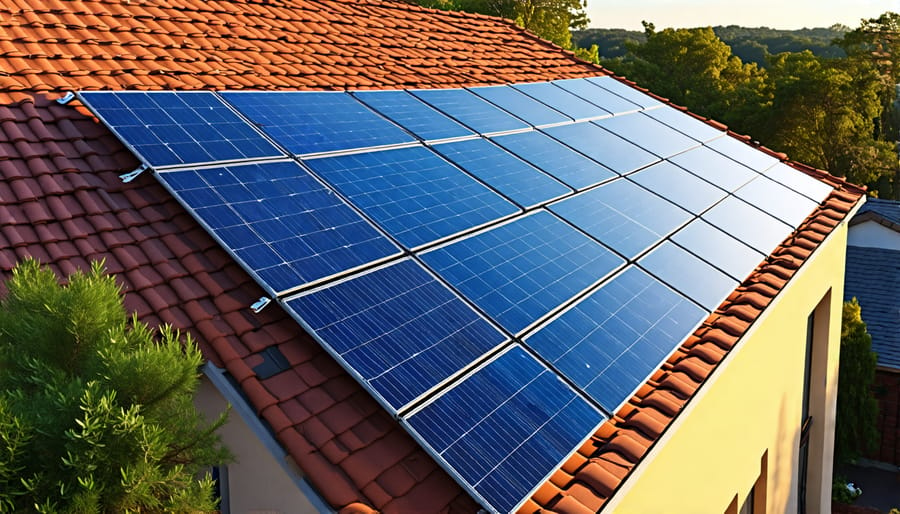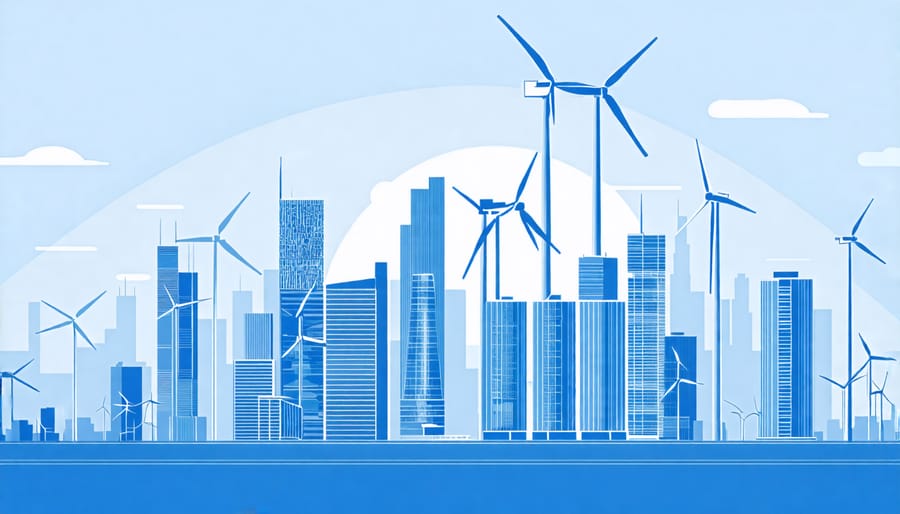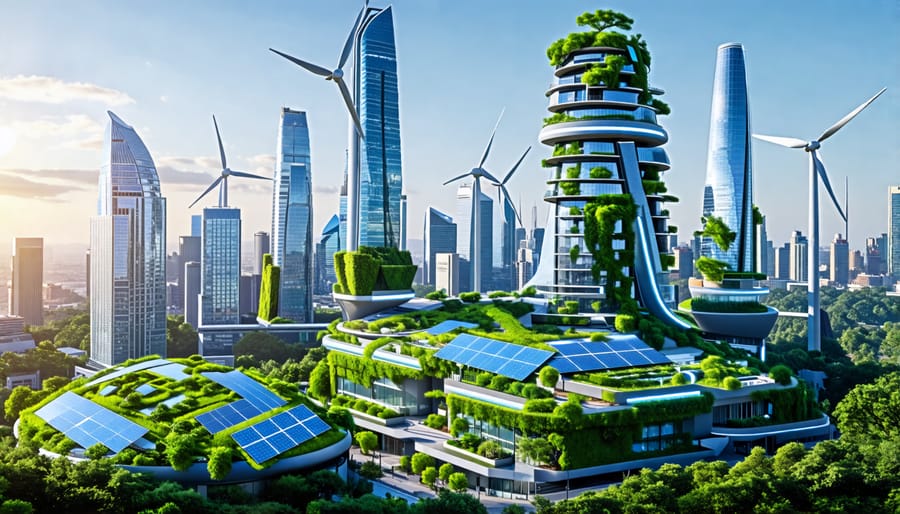Harness the power of renewable energy in architecture to create sustainable, energy-efficient buildings that minimize environmental impact and reduce operating costs. Integrate solar panels, wind turbines, and geothermal systems to generate clean electricity and heat, reducing reliance on fossil fuels. Design buildings with passive solar strategies, such as strategic orientation, shading, and thermal mass, to naturally regulate temperature and reduce energy consumption. Implement green roofs and walls to improve insulation, reduce urban heat island effect, and create habitats for wildlife. By embracing renewable energy technologies and sustainable design principles, architects and construction professionals can lead the way in creating a more resilient, low-carbon built environment that benefits both people and the planet.
The Case for Renewable Energy in Buildings
Environmental Impact
The adoption of renewable energy in architecture significantly reduces carbon emissions from buildings, which are a major contributor to climate change. By integrating technologies like solar panels, wind turbines, and geothermal systems, architects can design structures that generate clean energy on-site, minimizing reliance on fossil fuels. This shift towards sustainable energy sources not only reduces carbon emissions but also decreases other harmful pollutants associated with traditional energy production. Moreover, renewable energy in buildings promotes energy efficiency, as architects can optimize designs to maximize natural lighting, ventilation, and passive heating or cooling. These strategies further reduce the overall energy consumption and carbon footprint of the built environment. As the construction industry embraces renewable energy, it sets a powerful example for other sectors and demonstrates a commitment to combating climate change through innovative, environmentally responsible practices.

Economic Advantages
Renewable energy systems offer significant long-term cost savings for architectural projects. While the initial investment may be higher compared to traditional energy sources, the operational costs are considerably lower. Solar panels, wind turbines, and geothermal systems have minimal fuel costs, as they harness freely available natural resources. Additionally, these systems require less maintenance, reducing ongoing expenses.
Furthermore, many governments offer financial incentives to encourage the adoption of renewable energy in construction. These incentives include tax credits, grants, and subsidies, which can offset the upfront costs. For example, the United States offers the Solar Investment Tax Credit (ITC), providing a 26% tax credit for solar installations on residential and commercial properties.
As energy prices continue to rise, buildings with renewable energy systems become more attractive to potential buyers or tenants. The reduced energy costs can be a significant selling point, increasing the value and marketability of the property. Moreover, companies and individuals are increasingly prioritizing sustainability, making green buildings with renewable energy a desirable choice.
Investing in renewable energy also helps protect against future energy price volatility. By generating their own clean energy, buildings can mitigate the impact of fluctuating energy prices and ensure a more stable and predictable operating budget. This long-term financial stability is particularly appealing for commercial properties and institutions with large energy demands.
Energy Resilience
Incorporating renewable energy systems into architectural design not only reduces environmental impact but also enhances a building’s energy resilience. By generating clean energy on-site, buildings become less reliant on the grid and more self-sufficient. This increased energy security is particularly valuable during power outages or disruptions, ensuring that critical systems can continue to function. Renewable technologies like solar panels, wind turbines, and geothermal systems can be integrated seamlessly into the building’s design, providing a reliable and sustainable source of power. Battery storage solutions further enhance resilience by storing excess energy for later use. By prioritizing energy resilience through renewable integration, architects can create buildings that are not only environmentally friendly but also more adaptable and resilient in the face of potential energy challenges. This self-sufficiency is a key advantage of renewable energy in architecture, contributing to the overall sustainability and long-term viability of the built environment.
Key Renewable Energy Technologies in Architecture
Solar Photovoltaics
Solar photovoltaic (PV) technology is a key renewable energy solution in sustainable architecture, enabling buildings to generate their own clean electricity. Rooftop solar panels and building-integrated photovoltaics (BIPV) are two primary ways architects incorporate PV into their designs. Rooftop installations are the most common, with panels mounted on racks to optimize energy production. BIPV seamlessly integrates PV cells into the building envelope, replacing conventional materials in roofs, skylights, facades, and windows. This approach enhances aesthetics and improves energy efficiency by providing both electricity and thermal insulation. Advancements in Solar Photovoltaics have made panels more efficient, cost-effective, and adaptable to various architectural styles. With the right design and installation, PV systems can significantly reduce a building’s reliance on grid electricity, lower operating costs, and contribute to net-zero energy goals. As solar technology continues to evolve, architects have more opportunities to integrate PV creatively and efficiently, making it a crucial tool in the design of sustainable, energy-producing buildings.

Solar Thermal Systems
Solar thermal systems harness the sun’s heat to provide space heating, cooling, and hot water in buildings. These systems use solar collectors, typically mounted on the roof, to absorb the sun’s energy and transfer it to a fluid, such as water or antifreeze. The heated fluid is then circulated through a heat exchanger, where it warms water for domestic use or powers a heating system. In some cases, the heated fluid can also drive an absorption chiller for cooling.
There are two main types of solar thermal collectors: flat-plate and evacuated tube. Flat-plate collectors are more common and cost-effective, consisting of a dark absorber plate, copper pipes, and a glass cover. Evacuated tube collectors are more efficient, especially in colder climates, as they minimize heat loss using vacuum-sealed glass tubes.
Solar thermal systems can significantly reduce a building’s reliance on fossil fuels for heating and hot water, lowering both energy costs and carbon emissions. They are particularly well-suited for buildings with high hot water demand, such as hospitals, hotels, and multifamily residences. When integrated into the architectural design from the outset, solar thermal systems can be an attractive and efficient addition to a building’s renewable energy portfolio.
Wind Turbines
Wind turbines are an increasingly popular renewable energy solution for buildings, with small-scale designs suitable for architectural integration. These compact turbines, typically ranging from 1 to 100 kilowatts, can be mounted on rooftops or incorporated into building facades to harness wind power and generate clean electricity on-site. By strategically placing turbines based on the building’s location, orientation, and wind patterns, architects can optimize energy production while minimizing visual impact and noise.
Advances in wind turbine technology have led to more efficient and cost-effective options for buildings. Vertical-axis wind turbines (VAWTs) are particularly well-suited for urban environments due to their ability to capture wind from any direction and their lower noise levels compared to traditional horizontal-axis turbines. Some innovative designs, such as the Windtronics Honeywell Wind Turbine, feature a compact, bladeless design that maximizes energy capture in low-wind conditions.
Successful implementations of wind turbines in architecture can be seen in projects like the Bahrain World Trade Center, where three large turbines are integrated between the building’s twin towers, and the Pearl River Tower in Guangzhou, China, which incorporates multiple wind turbines into its facade. As the technology continues to evolve, small-scale wind turbines are becoming an increasingly viable option for buildings seeking to reduce their reliance on grid electricity and minimize their carbon footprint.

Innovative Projects Showcasing Renewable Energy in Architecture
As more architects and developers embrace renewable energy, innovative projects are emerging that showcase the potential for sustainable design. One notable example is the Bullitt Center in Seattle, Washington. Completed in 2013, this six-story office building is designed to be energy and carbon neutral, with a 242 kW rooftop solar array that generates all of its electricity needs. The building also features a rainwater collection system, composting toilets, and a geothermal heat exchange system for heating and cooling.
Another impressive project is the Bahrain World Trade Center, which incorporates three massive wind turbines into its design. The 50-story twin towers, connected by sky bridges, funnel wind through the turbines, generating up to 15% of the building’s energy requirements. This iconic structure demonstrates how renewable energy can be seamlessly integrated into large-scale commercial developments.
In Dubai, the newly opened Museum of the Future is not only a stunning architectural marvel but also a model of sustainability. The building’s exterior features 1,024 solar panels, which provide power for the museum’s exhibits and systems. The torus-shaped structure also employs passive design strategies, such as natural ventilation and shading, to reduce energy consumption.
Residential projects are also pushing the boundaries of renewable energy integration. The Økohaus Heilbronn in Germany is a multi-family Passive House that combines solar panels, a geothermal heat pump, and a highly insulated envelope to achieve net-zero energy performance. The building’s residents enjoy comfortable living spaces while minimizing their environmental impact.
These notable buildings and many others around the world are proving that renewable energy can be effectively harnessed to create sustainable, efficient, and visually striking architecture. As technology advances and costs decline, we can expect to see even more ambitious projects that push the limits of what is possible with renewable energy in the built environment.
Challenges and Future Outlook
Adopting renewable energy in architecture faces challenges, such as high upfront costs, lack of awareness, and regulatory barriers. However, emerging technologies like advanced solar panels, smart grids, and energy storage systems are making renewable energy more accessible and cost-effective. As these technologies mature and become more widely available, they will help overcome the current obstacles.
Governments and organizations are also playing a crucial role in promoting renewable energy through incentives, policies, and research funding. This support is driving innovation and encouraging more architects and developers to incorporate renewable energy into their projects.
Despite the challenges, the promising future of renewable energy in architecture is evident. As the world becomes increasingly focused on sustainability and combating climate change, the demand for green buildings will continue to grow. By embracing renewable energy, architects and construction professionals can create environmentally friendly, energy-efficient buildings that contribute to a cleaner, more sustainable future. As technology advances and costs decrease, renewable energy will become an even more integral part of architectural design, transforming the built environment for the better.

